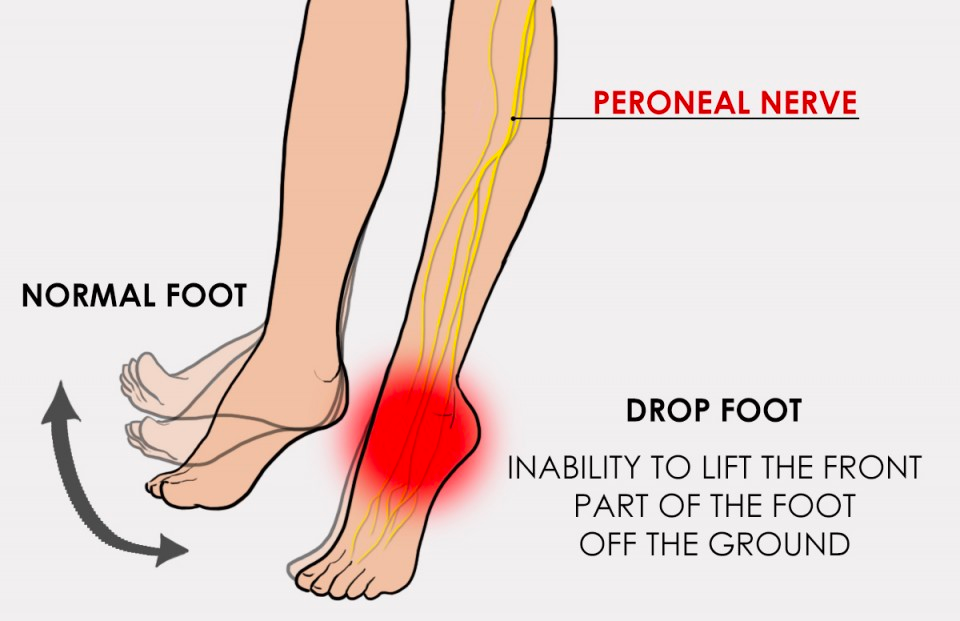Foot drop physiotherapy
By Nigel ChuaFoot drop, sometimes called drop foot, is a medical term to explain difficulty with lifting the front part of the foot to walk or move. The patient will experience weakness, paralysis and difficulty lifting up the foot. This causes the patient to drag the toes on the ground, or to compensate by "slapping" the feet on the floor while walking.
No, drop foot is not a disease. In fact, it is caused by either/a combination of:
- an anatomical problem
- a muscular problem
- a neurological problem.
Thankfully, it is usually a short term (temporary) condition, but in some patients, it may be a permanent condition.
Patients who have drop foot will benefit from immediate and ongoing:
- Drop foot physiotherapy by our senior physiotherapists in Phoenix Rehab Singapore which includes muscle strengthening, electrotherapy to stimulate the muscles and affected nerves, balance and gait training.
- Customized resting foot splint and customized dynamic walking foot splint fabricated by our senior hand therapist.
- Deep tissue release to stimulate muscle growth, stimulate blood circulation and release tight muscle knots from overcompensatory muscles.
- Acupuncture to stimulate nerves, circulation and Qi healing.
Drop foot can affect young and old, men and women, and it can be so debilitating that even the most simple tasks can become ultra-difficult.
DROP FOOT SYMPTOMS

The #1 symptom of drop foot is precisely the name of the condition "drop foot". Patients who have this condition find themselves being unable to lift up their foot at the ankle. Mostly it's due to an injury to the peroneal nerve, but it can be caused by other conditions such as stroke or even a slipped disc.
Having drop foot makes it very difficult to walk normally, because of the mechanism of this symptom. Standing upright is okay, but walking requires one to move forward using a series of movements including lifting the feet up alternatively. Patients will usually compensate by lifting their hip higher and this results in a "foot slapping motion" onto the floor as they walk.
Thankfully, foot drop usually affects only one side (i.e. one foot), though in some instances, both feet may be affected. In some cases, patients with foot drop may also experience altered sensation in the affected foot such as
- numbness
- tingling
- pins and needles
- cold.
FOOT DROP PHYSIOTHERAPY AND OTHER TREATMENTS

Physiotherapy
Whether the foot drop is temporary or permanent, patients will need physiotherapy interventions to recover. Physiotherapy for foot drop will depend entirely on the cause of the foot drop. Most of the time, if the cause of the temporary foot drop is accurately diagnosed and accurately treated, the foot drop may disappear quickly and entirely. And conversely, if it isn't accurately diagnosed and treated, drop foot may become permanent.
Physiotherapy interventions include:
- physio and rehab exercises to strengthen your leg muscles and improve and maintain the range of motion in your hips, knees and ankles
- gait retraining
- stretching exercises to prevent stiffness in your ankle and heel
- electrotherapy to stimulate muscle and nerve growth and maintenance
- referral to foot and ankle specialists and hand therapists for customized foot and ankle splinting.
Hand Therapy
Patients with foot drop will benefit from having
- a customized resting foot and ankle splint
- a customized dynamic/walking foot and ankle splint
fabricated for their affected foot. The resting version helps to keep your foot in 90 degrees flexion, to prevent it from stiffening in a flat/extended position (which will dampen your ability to stand upright or walk). The dynamic version helps to keep your foot at 90 degrees as you walk.
Deep tissue release/sports massage and acupuncture may be helpful to
- stimulate muscle and nerve growth
- stimulate blood circulation
- improve recovery rate
- prevent stiffness.
Invasive corrective surgery usually is a last resort for patients with permanent irreversible foot drop. These patients may benefit from ankle or foot bone fusion. In some cases, the surgeon may recommend tendon transfer, but this would be based on the expert advice of orthopedic doctors and surgeons.
Browse other articles by category
Physiotherapy for Knee Pain Physiotherapy For Slipped Disc Physiotherapy for Neck Pain PHYSIOTHERAPY
PHYSIOTHERAPY
 Hand Therapy
Hand Therapy
 Alternative
Alternative
 Massage
Massage
 Traditional Chinese Medicine Treatment
Traditional Chinese Medicine Treatment
 Rehab
Rehab
 Physiotherapy For Lower Back Pain
Physiotherapy For Shoulder Pain
Orthopedic Doctors, Insurance & Healthcare
Physiotherapy For Upper Back Pain
Frozen Shoulder
Physiotherapy for Back Pain
Physiotherapy For Lower Back Pain
Physiotherapy For Shoulder Pain
Orthopedic Doctors, Insurance & Healthcare
Physiotherapy For Upper Back Pain
Frozen Shoulder
Physiotherapy for Back Pain

 Whatsapp us now
Whatsapp us now